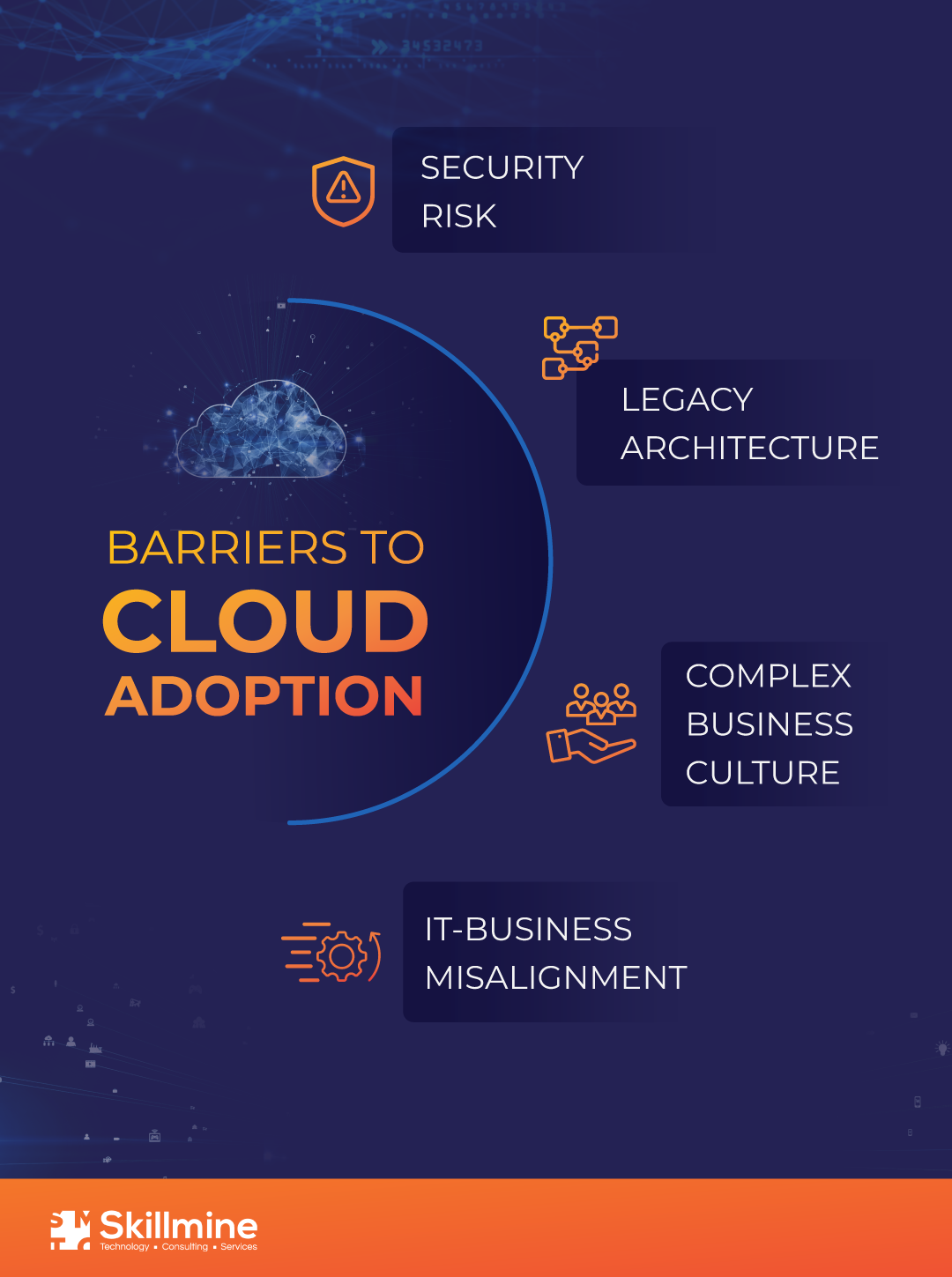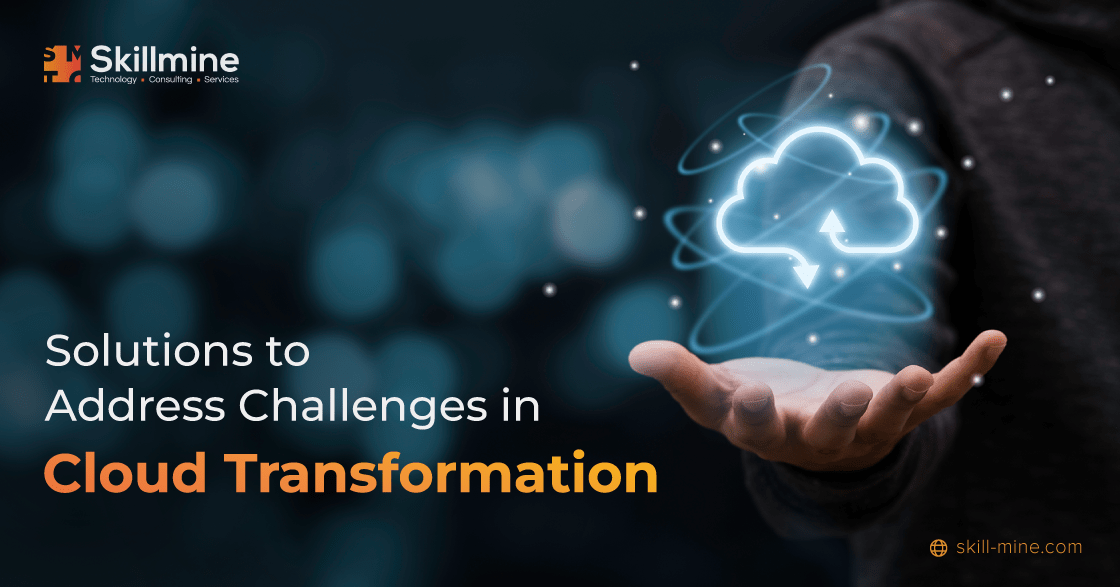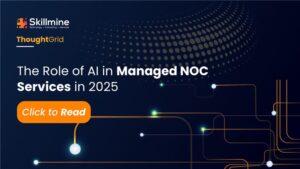The adoption of cloud technology has independently generated a value of $1 trillion for Fortune 500 companies. With emphasis placed on innovation and optimization rather than mere cost-cutting measures, cloud transformation has become an enduring aspect of modern business.
Each organization’s journey towards cloud integration is unique. To effectively navigate this transformation, it’s crucial to envision your desired end state, assess your readiness for cloud adoption, and embrace an agile methodology to address any gaps. Incremental cloud transformation services allow swift demonstration of value while minimizing the necessity for sweeping predictions. By adopting an iterative approach, you can sustain momentum and adapt your strategy based on experiential learning.
Developing a Strategy for Cloud Transformation
Embarking on a journey towards cloud transformation may seem daunting at first, but with proper preparation and planning, you can navigate potential pitfalls and challenges successfully. Here are some key practices to ensure a smooth transformation:
- Perform a Benchmarking Exercise: Initiate by benchmarking your organization against competitors to gain insights into your current capabilities and identify areas for improvement. This exercise guides your investment of time, effort, and resources for optimal outcomes.
- Align IT and Business Goals and Strategies: Harmonizing business processes with IT is crucial in today’s digital landscape. Identify your organization’s goals, existing systems, technologies, and processes. Collaborate with department representatives to outline objectives and establish priorities. Develop a cloud migration roadmap based on these objectives.
- Select the Right Cloud Hosting Platform: Choosing a cloud transformation services provider requires careful consideration, as they will handle your data. Evaluate platforms based on factors such as longevity, support, technology compatibility, ease of deployment, security, and cost to find the best fit for your goals.
- Implement Analytics for Monitoring and Optimization: Continuous monitoring and optimization of cloud usage post-migration can yield further efficiencies. Focus on metrics impacting your bottom line or user experience. Regular evaluation ensures system health and performance, preempting defects or issues.
- Implement a Data Governance Solution: Cloud migration often necessitates a reevaluation of data governance policies. Develop a policy outlining methods, responsibilities, and processes for standardizing, integrating, protecting, and storing corporate data. Choose a solution offering automation and continuous improvement for seamless data transition.
- Address Cloud Security and Compliance: Prioritize cloud security within your strategy and roadmap. Conduct an impact analysis to understand security gaps and future needs. Leverage tools to proactively identify and mitigate risks associated with migration, ensuring preparedness for potential issues.
According to Cloudwards, a leading cloud technology publication, by 2025, there will be over 100 zettabytes of data stored in the cloud. Compare this to 2015, where only 25 percent of all the computing data was stored on cloud. That’s a huge difference, right?
Currently, the cloud is what propels digital transformation. To keep accelerating business operations, companies are competing to switch their IT infrastructures to cloud-based services. The advantages of embracing cloud computing are being acknowledged by businesses worldwide. Cloud has enabled organizations to quickly deliver new products and services, allowing them to realise their goals. However, there are some barriers that all companies face when undertaking their cloud journey.
Developing a Strategy for Cloud Transformation
Embarking on a journey towards cloud transformation may seem daunting at first, but with proper preparation and planning, you can navigate potential pitfalls and challenges successfully. Here are some key practices to ensure a smooth transformation:
- Perform a Benchmarking Exercise: Initiate by benchmarking your organization against competitors to gain insights into your current capabilities and identify areas for improvement. This exercise guides your investment of time, effort, and resources for optimal outcomes.
- Align IT and Business Goals and Strategies: Harmonizing business processes with IT is crucial in today’s digital landscape. Identify your organization’s goals, existing systems, technologies, and processes. Collaborate with department representatives to outline objectives and establish priorities. Develop a cloud migration roadmap based on these objectives.
- Select the Right Cloud Hosting Platform: Choosing a cloud transformation services provider requires careful consideration, as they will handle your data. Evaluate platforms based on factors such as longevity, support, technology compatibility, ease of deployment, security, and cost to find the best fit for your goals.
- Implement Analytics for Monitoring and Optimization: Continuous monitoring and optimization of cloud usage post-migration can yield further efficiencies. Focus on metrics impacting your bottom line or user experience. Regular evaluation ensures system health and performance, preempting defects or issues.
- Implement a Data Governance Solution: Cloud migration often necessitates a reevaluation of data governance policies. Develop a policy outlining methods, responsibilities, and processes for standardizing, integrating, protecting, and storing corporate data. Choose a solution offering automation and continuous improvement for seamless data transition.
- Address Cloud Security and Compliance: Prioritize cloud security within your strategy and roadmap. Conduct an impact analysis to understand security gaps and future needs. Leverage tools to proactively identify and mitigate risks associated with migration, ensuring preparedness for potential issues.
4 BARRIERS TO CLOUD ADOPTION

Let’s look at the ways to overcome these barriers:
Evaluate technology stack:
The technology stack consists of all apps, the development resources needed to create them, data, and the computational resources. You would need to put lesser effort controlling and integrating all necessary components if you have the right tech stack. Since technology will be a foundation for cloud-based apps, conducting research and assessing its viability will lessen the workload.
Build an effective cloud strategy:
The company’s vision and perspective on the cloud must be taken into account while developing a cloud strategy. The following factors need to be considered when developing a suitable cloud strategy (Read 7 Steps of cloud migration).
Modernizing the cloud: This process needs careful planning. It would ultimately allow applications to function concurrently and flawlessly while swiftly scaling up and down, optimising compute and cost. These days, quicker iteration and deployment necessitate shorter development lifecycles.
Cloud and Data Analytics: Using the cloud in conjunction with analytics offers a practical way to analyse a lot of data at once. Data Analytics as a Service (DaaS) is a method of delivering cloud-based analytics capabilities across a range of sectors and use cases.
Cloud infrastructure and multi-cloud operation: As businesses modernise their application stacks with new software or by developing new ones, they can optimise various applications with the use of cloud services that are specific to each vendor. Business applications may be tailored for a specific cloud or they may be more prevalent on a particular operating system and best suited to a specific cloud.
Use cloud agnostic services:
Organizations believe that a cloud agnostic approach gives a chance to develop a highly portable system. Adopting a cloud agnostic approach involves using a multi-cloud provider. Cloud agnostic technologies include:
Microservices: This divides an application into a number of compact pieces, each of which performs a single business function. Microservices (Recognize which microservices trend best suits your firm) perform well for autonomous teams and loosely linked systems.
Dockers: It is an open-source framework for packaging applications in containers. Docker focuses on how applications behave and what physical infrastructure they support while providing portability, creating network and storage abstraction.
Change the operating model:
Business transformation involves more than merely switching to new technologies and adopting fresh approaches. In order to improve business operations and operational business models, data platforms must be improved. Security must also be added after a migration, and solutions must be managed appropriately in accordance with financial and HR standards to ensure better execution.
Leverage experienced cloud providers:
Cloud providers support and enable enterprises to move, adapt, and establish cloud-native products by bringing a global business solution, outsourcing, and consulting skills. Leading cloud service providers like Skillmine make it simple for organizations to handle massive amounts of incoming data, extra workload, and the creation of new platforms while also assisting with large-scale migration.
Conclusion:
Future organizations will lean more toward the cloud, which will become more pervasive and depend more on cloud-native architectures and technologies. Utilizing resources or as-a-service features will spread more widely. Skillmine aids partners in innovating to fit in a cloud environment and modernising their applications to effectively transition to the cloud.
Cloud transformation stands as one of the paramount endeavors for organizations. Embracing cloud services unlocks fresh avenues for growth and facilitates agile scaling to meet customer demands efficiently. However, alongside technological advancements come security risks and novel opportunities. Employing security analytics, vulnerability scanning, and comprehensive log collection is vital for safeguarding systems and enhancing security and compliance measures.
Legacy applications often impede visibility, while migrating to the cloud expedites transformation and spurs digital evolution within enterprises. Overcoming these hurdles is crucial for unleashing the full potential of digital transformation, albeit impacting the timelines of cloud adoption. Skillmine is a premier enterprise cloud transformation service provider adept at surmounting obstacles, delivering excellence with speed, and reducing overall ownership costs.
Our cloud transformation services adeptly spearhead large-scale enterprise cloud migration endeavors, consolidating data, infrastructure, and applications under a unified umbrella. We reimagine customer experiences and offer transformative cloud solutions, helping businesses achieve cost efficiency and enhanced agility.
Looking for expert technology consulting services? Contact us today.





